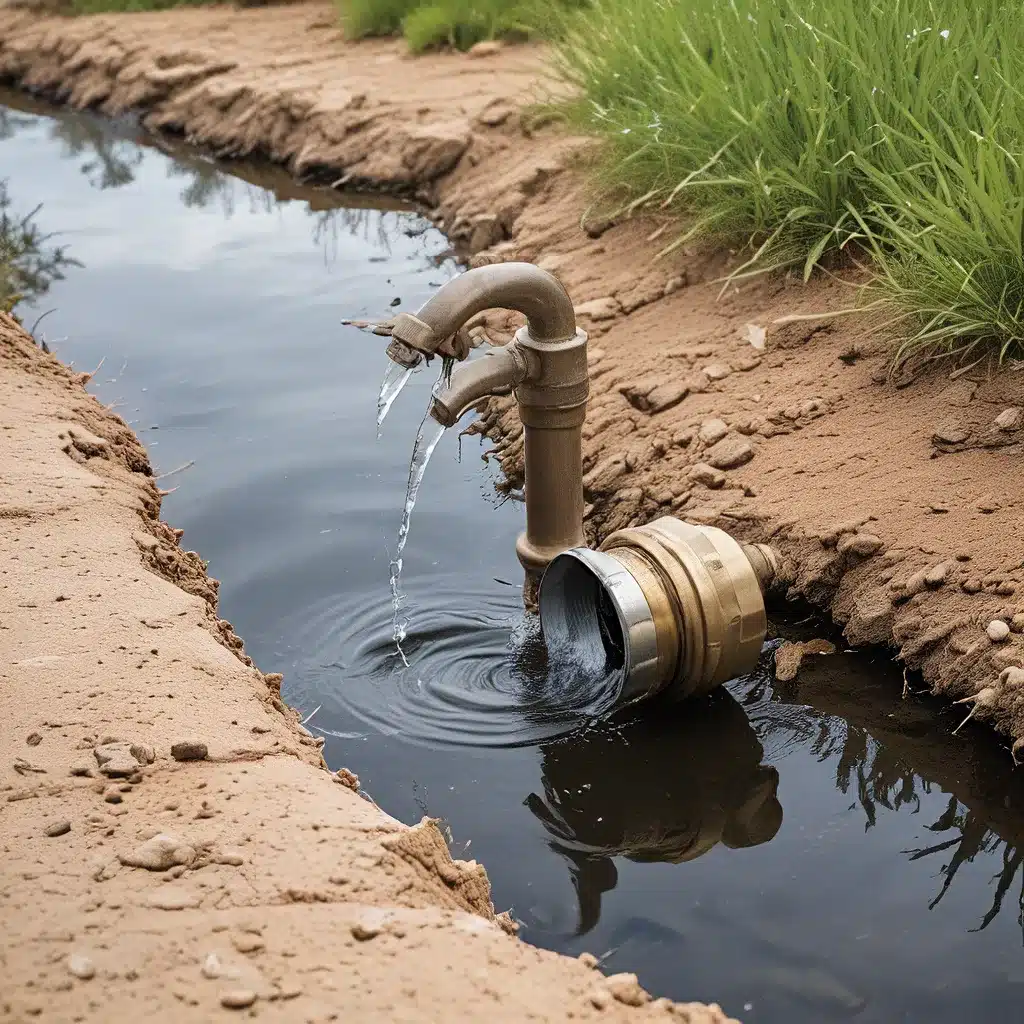
The Water Preservation Odyssey: A Personal Journey
Water conservation – a topic that might initially seem as dry as a desert, but trust me, it’s anything but! As an environmental enthusiast, I’ve found myself on a captivating odyssey through the world of water management, and let me tell you, it’s been a wild ride.
You see, I used to be that person who would let the tap run while I brushed my teeth, blissfully unaware of the hidden costs and consequences. But then, something clicked. I stumbled upon a local water treatment company that opened my eyes to the importance of water conservation, and let me tell you, it was a game-changer.
I learned that water is a finite resource, and the way we manage it today can have a profound impact on the generations to come. It’s not just about saving a few gallons here and there – it’s about ensuring that our communities, industries, and ecosystems can thrive in the face of ever-changing environmental challenges.
Navigating the Compliance Landscape: A Balancing Act
As I dove deeper into the world of water conservation, I quickly realized that it’s not just about personal habits; it’s also about navigating a complex web of regulations and compliance standards. You see, water management is a highly regulated industry, and for good reason. The health and well-being of our communities depend on it.
Imagine a scenario where a water treatment plant decides to cut corners and bypass essential safety protocols. The consequences could be disastrous – contaminated water supplies, environmental damage, and even public health crises. That’s why compliance is so crucial in this field.
But here’s the thing: compliance doesn’t have to be a burden. In fact, when done right, it can be a powerful tool for driving innovation and sustainability. It’s all about finding that delicate balance between meeting regulatory requirements and exploring creative water-saving solutions.
Unlocking the Secrets of Water Conservation
So, what does it take to truly master the art of water conservation? Well, it’s a multifaceted endeavor that requires a deep understanding of the various components involved.
First and foremost, it’s about conducting a thorough site analysis. This means understanding the topography, geology, and hydrology of the area you’re working with. It’s about identifying potential water sources, assessing contamination risks, and determining the optimal infrastructure deployment.
Once you’ve got a solid understanding of the physical landscape, it’s time to dive into the nitty-gritty of water demand and distribution. You’ve got to accurately estimate the water needs of the population, factor in industrial requirements, and account for seasonal variations. And then, you’ve got to develop a strategic zoning plan to allocate water efficiently and design the pipeline network accordingly.
But the real magic happens when you start exploring the world of source diversification and advanced treatment methods. Experts from the Washington State Recreation and Conservation Office have highlighted the importance of utilizing multiple water sources, such as groundwater, surface water, rainwater harvesting, and even desalination. And when it comes to treatment, the options are endless – from traditional filtration to cutting-edge technologies that can remove even the most stubborn contaminants.
Embracing the Power of Smart Technologies
But the story doesn’t end there. As I’ve learned, the true mastery of water conservation lies in the integration of smart technologies. Imagine a world where every drop of water is meticulously tracked, leaks are detected in real-time, and pressure management systems optimize the flow for maximum efficiency.
The Kentucky Energy and Environment Cabinet has been at the forefront of this revolution, championing the use of smart meters, sensors, and monitoring systems to give water utilities unprecedented visibility into their systems. And the benefits are clear – reduced water waste, improved infrastructure longevity, and enhanced customer engagement.
Sustainability and Compliance: A Harmonious Embrace
Now, you might be thinking, “Hold on, isn’t all of this focus on compliance and regulations just going to make the process more complex and expensive?” And you’d be forgiven for that initial skepticism. But the truth is, when you approach water conservation with a mindset of sustainability, compliance can actually be a powerful ally.
You see, many of the strategies and technologies that help us achieve compliance also happen to be the very same ones that drive long-term water sustainability. Things like water-efficient fixtures, greywater reuse systems, and green infrastructure solutions don’t just tick the regulatory boxes – they also reduce our reliance on finite water resources and minimize our environmental impact.
And let’s not forget the role of community engagement and stakeholder collaboration. As experts in the field have noted, successful water conservation initiatives are built on a foundation of open communication, shared understanding, and a collective commitment to a sustainable future.
Embracing the Complexity, Celebrating the Successes
So, as I look back on my water conservation journey, I can’t help but marvel at the sheer complexity of it all. It’s a delicate dance between science, technology, policy, and community engagement. But you know what? I wouldn’t have it any other way.
Because when you see the tangible results of your efforts – communities thriving with reliable, clean water supplies, industries operating in harmony with the environment, and ecosystems restored to their natural glory – it’s all worth it. It’s a testament to the power of human ingenuity, the importance of compliance, and the transformative potential of water conservation.
Sure, there are still challenges to overcome, and the work is never truly done. But that’s the beauty of it all – the constant evolution, the search for new solutions, the opportunity to leave a lasting impact on the world around us. And that, my friends, is what makes mastering the art of water conservation such an exhilarating and rewarding journey.
So, if you’re ready to dive in and become a water conservation superhero, then let’s get to work. The future of our planet depends on it.


